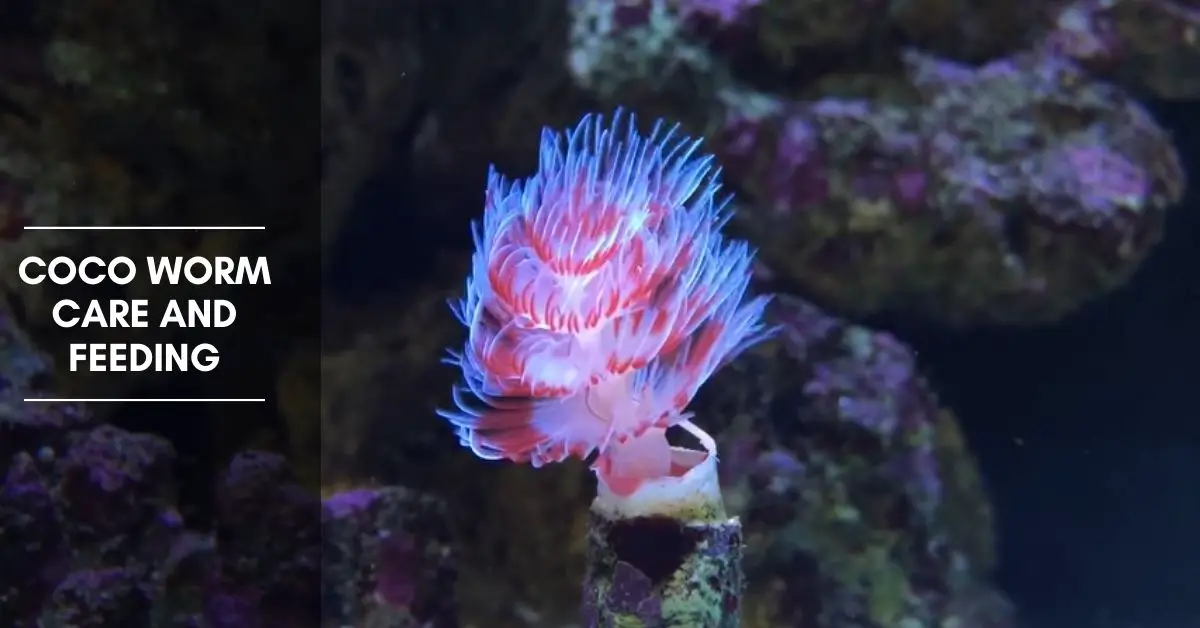Fan Worms
Feather Dusters look like a cluster of feathers sticking out of a tube. A worm creates this soft, flexible tube around its body for protection. The feathery part that sticks out of the tube is called the crown or fan, and at its base is the worm’s mouth.
When a Feather Duster is frightened or concerned it will quickly pull its crown into its tube for protection. If highly stressed, it may even shed its crown; it will usually grow a new one.
In a reef aquarium, gently bury the Feather Duster’s tube under the sand so that the crown is pointing upward into the light current. At feeding time the Feather Duster will spread its crown to capture food floating in the water. Captured food is moved by cilia (hair-like motile projection) down a groove to the mouth. This filter feeder eats phytoplankton as well as fine detritus from the water. There are also many prepared liquid and frozen foods for filter feeders.
Reef aquariums stocked with numerous filter feeders may want to feed daily. If there are few filter feeders in the reef, feed them just a few times a week. A turkey baster may be used to lightly blow food into the current moving towards the crown. If you try to blow food directly at the crown it will retract into its tube.
Feather Dusters are hardy, easy to keep and peaceful with their tank mates. They are safe with corals and other invertebrates.
Tetra AquaSafe Plus, 8.45 Ounces, aquarium Water Conditioner And Dechlorinator, Model Number: 46798162681
$8.49 (as of July 12, 2024 10:52 GMT +03:00 - More infoProduct prices and availability are accurate as of the date/time indicated and are subject to change. Any price and availability information displayed on [relevant Amazon Site(s), as applicable] at the time of purchase will apply to the purchase of this product.)API TAP WATER CONDITIONER Aquarium Water Conditioner 16-Ounce Bottle
(as of July 12, 2024 06:37 GMT +03:00 - More infoProduct prices and availability are accurate as of the date/time indicated and are subject to change. Any price and availability information displayed on [relevant Amazon Site(s), as applicable] at the time of purchase will apply to the purchase of this product.)API STRESS COAT Aquarium Water Conditioner 4-Ounce Bottle (85B)
40% OffCoco Worm (Protula bispiralis)
Coco Worms are unique among fan worms because they secrete a hard calcium carbonate protective tube around their bodies. Sticking out of the open end of the tube is a beautiful crown with feathery rays in shades of pink, yellow, red, orange or white or some combination of these colors.
Coco Worms create a hard, calcareous tube up to 24 inches long with interesting bends or spirals delineated along its length. When frightened or concerned this worm will quickly pull its filter-feeding crown into its tube for protection.
Feather-shaped rays of the crown are used to collect food from water. Cilia move food particles down the ray to the mouth of the worm. Coco worms do not have a trap door (operculum) at the open end of the tube to keep the air out if lifted out of the water. When transporting this creature, fill a fish bag with aquarium water and place the coco worm in the bag taking care to keep it totally submersed.
Place the Coco Worm in a shaded place in the rockwork or on the sand. If placed on the sand, gently bury its tube under the sand so its crown is pointing upward, or place it in a hole or crevice in the rockwork where the crown receives light current.
What do coco worms eat?
These filter feeders eat phytoplankton, zooplankton, bacteria, and even fine detritus floating in the water. Supplement their natural diet with prepared liquid and frozen foods that contain phytoplankton and zooplankton. In a well-stocked reef with other filter feeders, you can feed daily; if you have a few filter feeders, feed them only a few times a week. A turkey baster may be used to lightly blow food into the current towards the crown. If you try to blow food directly at the crown it will retract into its tube and will not eat.
Like stony corals, the Coco Worm requires calcium carbonate to grow its calcareous tube, so be sure to add calcium and carbonate to a reef housing this creature.
Coco Worms are safe with all corals and invertebrates, but some crabs may pester the Coco Worm, causing it to retract. If a crab persistently bothers a Coco Worm such that its crown is retracted the majority of the time, it is time to remove the crab.
Other Fan Worms
Hawaiian Feather Duster
Also called the Giant Feather Duster, Hawaiian Feather Dusters can grow up to seven inches long with a crown reaching seven inches in diameter. The crown can be tan with dark brown bands or tan or brown with white bands. These earthy colors do not make them sound exciting but they add a beauty and unique oddity to a reef.
Dwarf Feather Duster
This animal can grow up to four inches long. The tube is a light brown color and the crown can be red and white, pink and white, lime green, white and yellow.

Hi, my name is Sean, and I’m the primary writer on the site. I’m blogging mostly about freshwater and saltwater aquariums, fish, invertebrates, and plants. I’m experienced in the fishkeeping hobby for many years. Over the years I have kept many tanks, and have recently begun getting more serious in wanting to become a professional aquarist. All my knowledge comes from experience and reading forums and a lot of informative sites. In pursuit of becoming a professional, I also want to inspire as many people as I can to pick up this hobby and keep the public interest growing.
Read more about Sean.
Please join also my Facebook group.




















2 thoughts on “Coco Worm Care and Feeding”
Comments are closed.